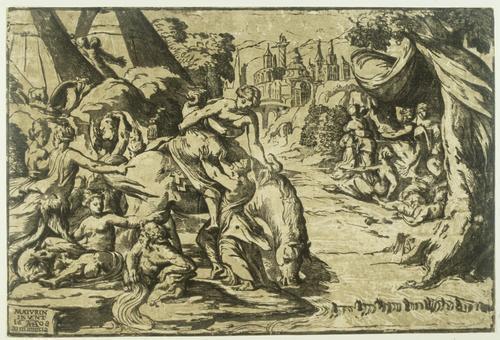| ||
|
Giuseppe Niccolo Vicentino Italian, active ca. 1540-1550 Clelia Crossing the Tiber
Museum Purchase Vicentino made sometimes crudely-cut woodcuts after designs by other and better artists, like Parmigianino. This one comes from a design by Maturino's partner Polidoro da Caravaggio. The subject is one that proves that women also ca n be heroes. In 508 B.C., Clelia managed the escape of a group of Roman girls from the clutches of an Etruscan king. In this image, Clelia is on horseback while the god of the Tiber River reclines classically. Freed damsels can be seen on the other bank. The Medieval feminist poet Christine de Pizan defended women from charges of cowardice and treachery by praising female heroes like Clelia: "Clelia was a brave and wise woman, even though she never participated in a battle." Such female bravery is the foundation of all culture for Christine who, however, is not perturbed by the supposed physical weakness of many women: "...God and Nature have done a great deed for women by giving them such weakness, because...thanks to this agreeable defect, they are excused from committing the horrible cruelties...which have been perpetrated through force and will." |
